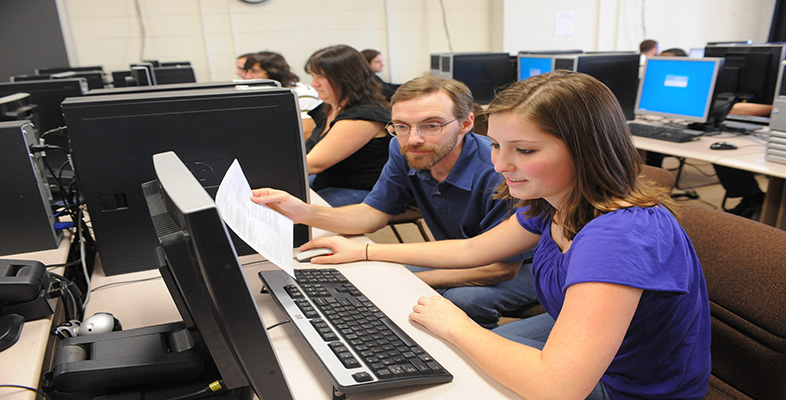5.2 Behaviorism, Piagetianism and social constructivism
How do the well-known ideas of behaviorism, Piagetianism and social constructivism relate to what you actually do as a teacher in a face-to-face context? Are you able to ‘sign up’ to any one of the theories wholeheartedly? As you read the descriptions you may have felt that each of them separately described some aspects of your ideas about learning and those of your colleagues, yet none was wholly satisfactory in its own right. For example, in teaching certain practical skills, a regime of practice and reinforcement in the ‘behaviorist’ tradition may be appropriate. An individual project will provide problem-solving opportunities and will be successful if the learner is working largely within his or her capabilities; a Piagetian standpoint. That teaching methods should be selected in terms of ‘fitness for purpose’, rather than adherence to a particular dogma of ‘good practice’, is clear. Teachers tend to have their preferred way of working, which reflects a personal ‘theory’, but nevertheless are not hidebound by particular ideologies and will adopt a different teaching strategy if they think it will be helpful. Sometimes it is called a ‘folk theory’ of learning.
Some people think that good teaching means the same thing as good explaining – keep it clear and simple and all will understand. In fact some teachers get very upset when, despite their greatest efforts, the learners just don't grasp what they have explained. When students just don’t ‘get it’ they take it as a personal failure, or maybe blame the learners themselves.
It is certainly true that a key teaching skill is the ability to explain and describe things clearly. But a belief that transmitting information clearly is all that is required for a ‘good’ teacher is insufficient. However, such a ‘folk’ theory of how minds work is very common, and also explains the position some parents take to learning and teaching. These common beliefs were investigated by Bereiter and Scardamalia (1996), who characterised a folk theory of mind as follows:
- knowledge is ‘stuff’
- the mind is a container
- learning involves putting stuff in the container
This tends to be reinforced by national curricula and examination syllabuses, which emphasise content knowledge. Bereiter and Scardamalia suggest that the corollaries of such a view of the mind is:
- pedagogy: a craft for stocking minds
- educational testing: a process for inventorying mental contents.
Desforges (2001) indicates that the corresponding ‘folk pedagogy’ to such a view of learning has had some remarkable success in teaching through ‘show and tell’.
But where the ‘stuff’ metaphor breaks down – as it does with wisdom, creativity, knowledge creation, appreciation, a ‘feel’ for a subject, we are left floundering.
(Desforges, 2001, p. 25)
Folk theories are indeed robust, yet the alternative ideas about teaching and learning outlined above have been considered for a least the last 50 years and, in more recent times, linked to a growing understanding about the biology of the brain.
Taking a social constructivist view of learning, the experiences that we should construct is not a ‘lecture’ but rather a one-to-one ‘tutorial’. How would you behave in those different contexts?
Activity 11
Imagine you have just one learner and you were going to work with them for about three hours to help them learn a key idea in your subject area.
You are planning what to do and it is just you and the learner.
In broad terms – What would you plan to do? How would you characterise the activities and the way you would work?
Discussion
To begin with I expect that you would not be planning to talk at length as, maybe, you would do if it was a big group that were expecting a ‘lecture’. You would make sure that the learner was with you, stopping and asking for feedback or for their own ideas. You might ask for examples from the learner from their experience or you might ask them to use your idea in a new situation or practice what they have learnt in a new situation. You might ask the learner to evaluate an idea or compare one idea with another. In short, you would ask them to be active.
Even when you are writing educational text, write it as though you are writing an interactive tutorial. Build in activities for the learner to do that will help them to learn. Activities such as questions, tasks and exercises are a very important feature of self-instructional material as they challenge the learner to do something they can assess and appreciate for themselves. If we take the view that we construct knowledge, then using the ideas that we are learning is vital. Remember the proverb often ascribed to the Chinese:
I hear, and I forget;
I see, and I remember;
I do, and I understand.
In addition to activities, however, is the style of writing. The one-to-one tutorial will be intimate and conversational and that is the style of writing that engages the learner. You should be able to ‘hear’ the writer talking to you. Of course, ideally it will not only be the writer contributing to the learner's engagement with the materials. As I described earlier, learning can be enhanced if we recognise that it is a social activity, too, involving interactions with other people, family, friends and work colleagues as well as fellow learners.
